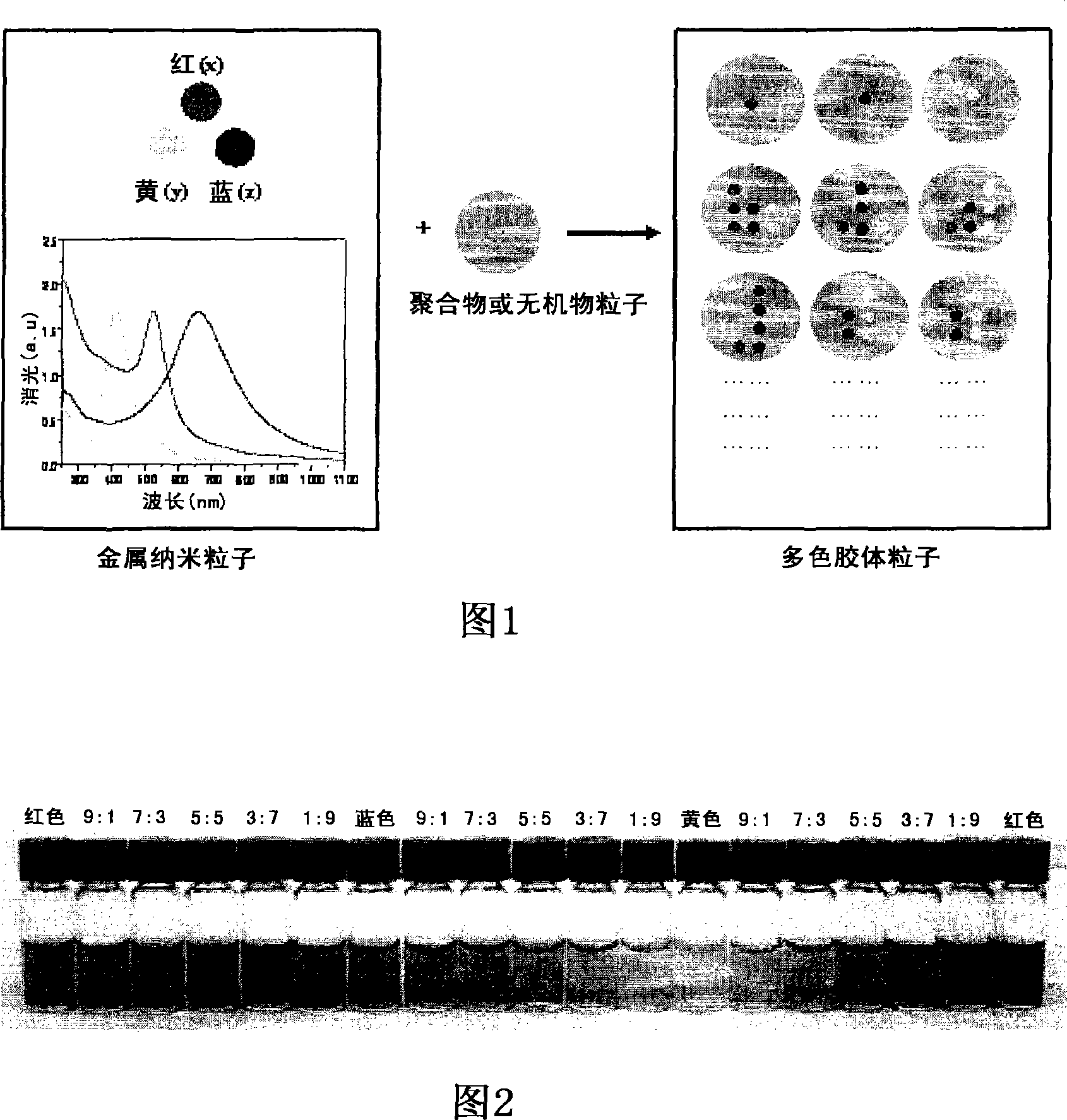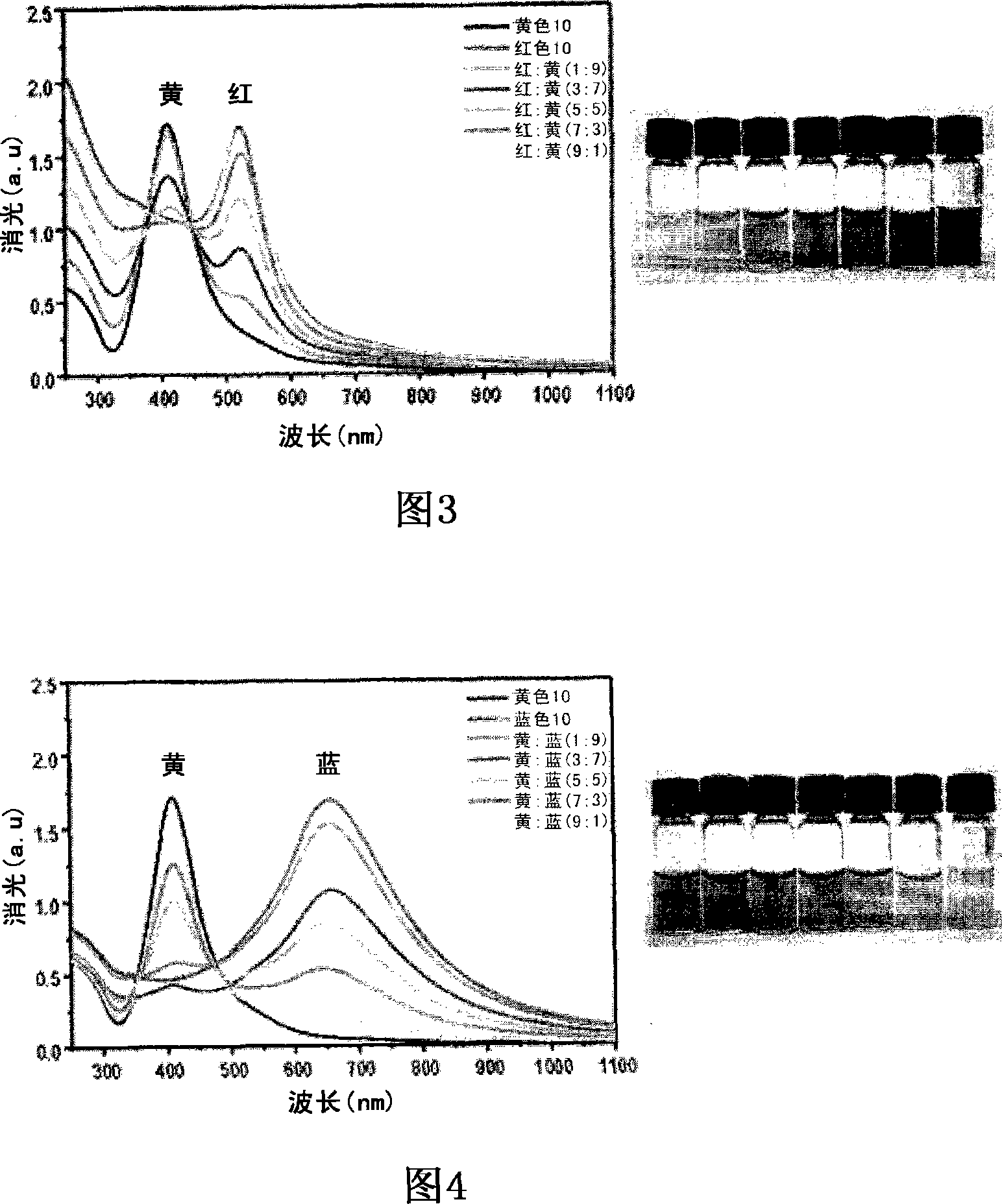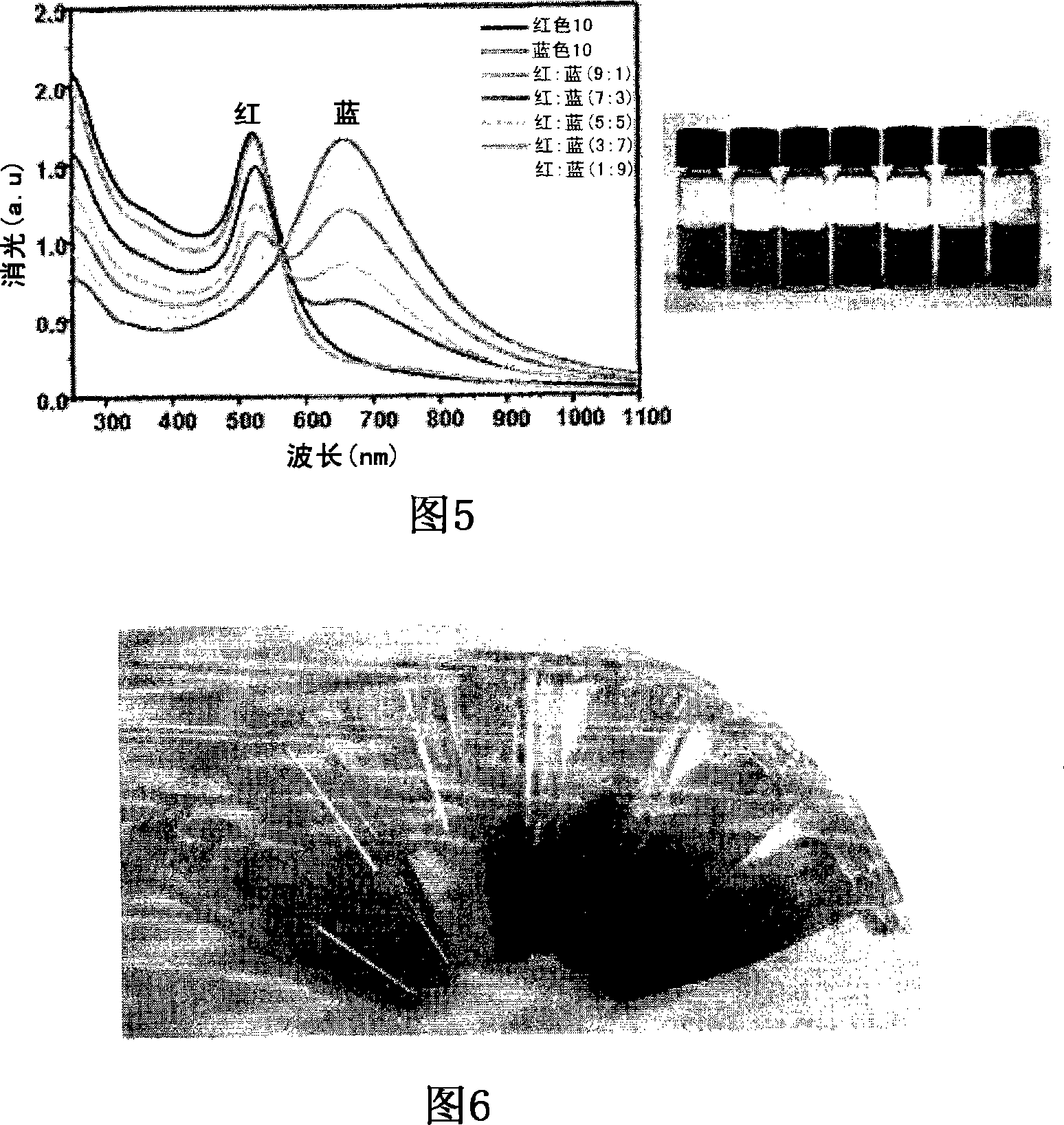Multicolor-encoded colloidal particles coated with metal nanoparticles mixture having colors in the visible region and method for preparing the same
A metal nanoparticle, nanoparticle technology, applied in metal processing equipment, nanotechnology for materials and surface science, colloid chemistry, etc., can solve problems such as difficulty in detecting samples
- Summary
- Abstract
- Description
- Claims
- Application Information
AI Technical Summary
Problems solved by technology
Method used
Image
Examples
Embodiment 1
[0061] Example 1: Preparation of Nanoparticle Mixtures Displaying Multiple Colors
[0062] Preparation of metal nanoparticles showing three primary colors
[0063] To prepare metal nanoparticles showing red, yellow, and blue, ie, the three primary colors, spherical gold nanoparticles and silver nanoparticles are first prepared.
[0064] To prepare spherical gold nanoparticles showing red color, 500ml of HAuCl 4 (1 mM) was added to a round-bottomed flask and heated under reflux at 100°C. 50 ml of sodium citrate (38.8 mM), as reducing agent, was added to the final solution. After confirming that the color of the reaction solution changed from yellow to dark red, the reaction liquid was further heated for 15 minutes, then cooled to room temperature, followed by filtration with a 0.2 μm microfilter.
[0065] To prepare silver nanoparticles showing yellow color, AgNO 3 (0.04 g), PVP (polyvinylpyrrolidone) (1 g) and 7.5 ml of EG (ethylene glycol) were mixed and stirred vigor...
Embodiment 2
[0072] Example 2: Preparation of colloidal particles coated with a mixture of metal nanoparticles exhibiting multiple colors
[0073] After selecting seven metal nanoparticle mixtures showing seven colors equivalent to rainbow colors from the metal nanoparticle mixtures prepared in Example , each of the selected metal nanoparticle mixtures was applied to the surface with Amine-treated polystyrene beads. Because of the coating process, polystyrene beads (3.18 μm, Bangs Laboratories, 1 wt% aqueous solution) were diluted (5X), and then 0.5 ml of the diluted solution was mixed with 4 ml of each metal nanoparticle exhibiting seven colors equivalent to rainbow colors. The particle mixture was mixed and then adjusted to an OD (optical density) of 2.8.
[0074] Polystyrene beads were coated with the final mixture for one day at room temperature. It was confirmed that the coated polymer particles precipitated after 4 hours at room temperature, and they were easily separated with a ...
Embodiment 3
[0077] Example 3: Identification of polychromatic colloidal particles
[0078] Colloidal particles coated with the mixture of metal nanoparticles exhibiting various colors prepared in Examples can be identified with SEM (scanning electron microscope) and TEM (transmission electron microscope). That is, after separating the polymer particles coated with the metal nanoparticles prepared in Example 2, the surface structure thereof was analyzed using SEM ( FIG. 9 ) and the structure of the metal nanoparticles coated on the surface of the polymer particles was analyzed using TEM ( FIG. 10 ). ) for a thorough inspection.
[0079] Fig. 9 is a scanning electron microscopy (SEM) photograph showing the surface of colloidal particles obtained by coating a mixture of metal nanoparticles on the surface of polymer and silica particles. To easily distinguish each characteristic structure, red spherical gold nanoparticles, yellow spherical silver nanoparticles, a mixture of green spherical...
PUM
 Login to View More
Login to View More Abstract
Description
Claims
Application Information
 Login to View More
Login to View More - R&D
- Intellectual Property
- Life Sciences
- Materials
- Tech Scout
- Unparalleled Data Quality
- Higher Quality Content
- 60% Fewer Hallucinations
Browse by: Latest US Patents, China's latest patents, Technical Efficacy Thesaurus, Application Domain, Technology Topic, Popular Technical Reports.
© 2025 PatSnap. All rights reserved.Legal|Privacy policy|Modern Slavery Act Transparency Statement|Sitemap|About US| Contact US: help@patsnap.com



